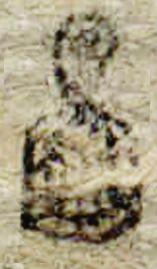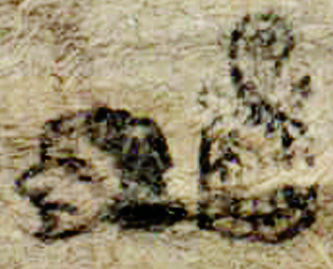Xiquipilli (BMapO105)
This black-line drawing of the simplex glyph for the personal name Xiquipilli (“Sack” or “8,000”) is attested here as a man’s name. The glyph is somewhat damaged, but it seems to show a ritual sack with a looping handle.
Stephanie Wood
The Codex Mendoza provides some intricately drawn xiquipilli signs that are part of place names. These sacks were elaborately made and especially valuable for the contents they contained, such as cacao beans and, after colonization, coins.
Stephanie Wood
This glyph is not glossed; the transliteration of the glyph comes from Gordon Whittaker’s contribution to the study by Mary E. Miller and Barbara E. Mundy (2012).
c. 1565
Jeff Haskett-Wood
bolsas, dinero, números, nombres de hombres

xiquipil(li), a special sack or the number 8,000, https://nahuatl.wired-humanities.org/content/xiquipilli
Bolsa, u Ocho Mil
Stephanie Wood
Beinecke Map/Codex Reese, section 8, no. 105 in the Whittaker study (published in the Miller/Mundy book, 2012), and see the original at: https://brbl-dl.library.yale.edu/vufind/Record/3600017
The Bodleian Libraries, University of Oxford, hold the original manuscript, the MS. Arch. Selden. A. 1. This image is published here under the UK Creative Commons, “Attribution-NonCommercial-ShareAlike 3.0 License” (CC-BY-NC-SA 3.0).



